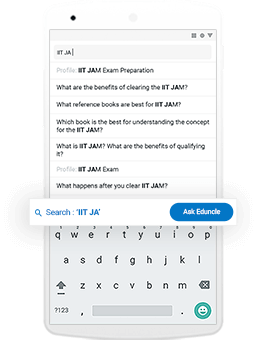Time management is very much important in IIT JAM. The eduncle test series for IIT JAM Mathematical Statistics helped me a lot in this portion. I am very thankful to the test series I bought from eduncle.
Nilanjan Bhowmick AIR 3, CSIR NET (Earth Science)- UGC NET
- Commerce
According to net income approach the cost of capital of a firm means
according to net income approach the cost of capital of a firm means
- 0 Likes
- 4 Comments
- 0 Shares
-
Rucha rajesh shingvekar
Refer this image
-
Rucha rajesh shingvekar Best Answer
Net income (NI) approach as this is also called as traditional approach. This is an approach in which both cost of debt, and equity are independent of capital structure. The components which are involved in it are constant and doesn't depend on how much debt the firm is using. This theory was proposed by David Durand. In this change in financial leverage leads to change in overall cost of capital as well as total value of firm. If financial leverage increases, weighted average cost decreases and value of firm and market price of equity increases. If this decreases then weighted average cost of capital increases and value of firm and market price of equity decreases. The assumptions which can be made according to this approach is that there are no taxes involved in this and the use of debt doesn't change the risk factor for the investors and will remain the same throughout.
Do You Want Better RANK in Your Exam?
Start Your Preparations with Eduncle’s FREE Study Material
- Updated Syllabus, Paper Pattern & Full Exam Details
- Sample Theory of Most Important Topic
- Model Test Paper with Detailed Solutions
- Last 5 Years Question Papers & Answers
Sign Up to Download FREE Study Material Worth Rs. 500/-



















Priya gulani![best-answer]()
EXAMPLE Consider a fictitious company with below figures. All figures in USD. Earnings before Interest Tax (EBIT)=100,000 Bonds (Debt part)=300,000 Cost of Bonds issued (Debt)=10% Cost of Equity=14% Calculating the value of a company EBIT=100,000 Less: Interest cost (10% of 300,000)=30,000 Earnings (since tax is assumed to be absent)=70,000 Shareholders’ Earnings=70,000 Market value of Equity (70,000/14%)=500,000 Market value of Debt=300,000 Total Market value=800,000 Overall cost of capital =EBIT/(Total value of firm) =100,000/800,000 =12.5%